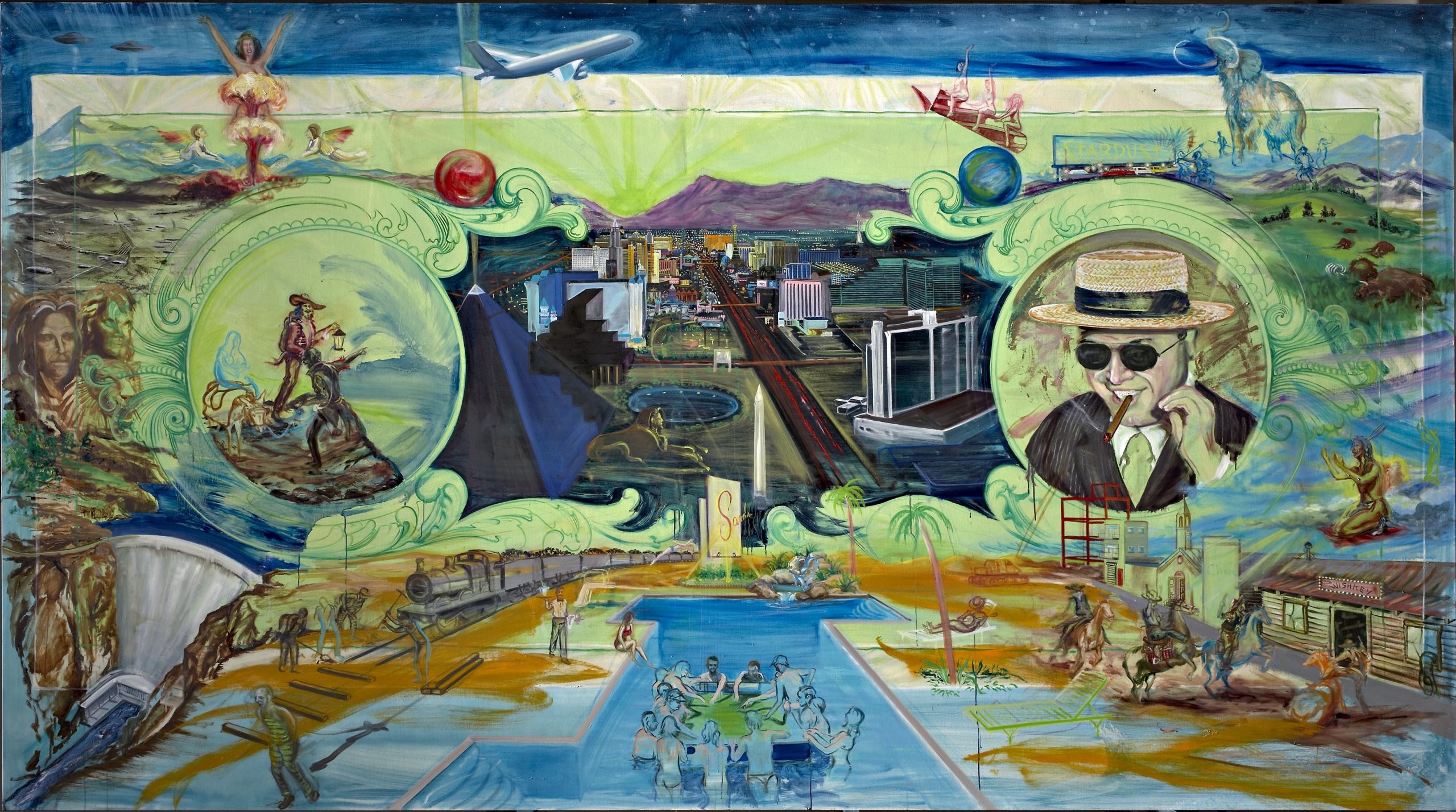Category: Special Projects — Published:
From laboratory, refuge or stage set, to site of resistance or arena for communal activity, the artist’s studio is a crucible of creativity. Ahead of our major exhibition next spring which presents different manifestations of the artist’s studio around the globe, we head to Italy with our longstanding partners at the Collezione Maramotti who share our enthusiasm for these spaces of artistic production.
Follow us on Instagram for a full-length tour of the Collezione’s exhibition with Director Sara Piccinini, who is joined by former Whitechapel Gallery Director Iwona Blazwick for a lively discussion about the ever-evolving contemporary artist’s studio.
Studio Visit: Thoughts and practices surrounding ten artists’ studios is on view in Reggio Emilia until 20 February 2022.
Stemming from collaboration with ten artists whose work is already on display at Collezione Maramotti, Studio Visit presents the work of Andy Cross, Benjamin Degen, Matthew Day Jackson, Mark Manders, Enoc Perez, Luisa Rabbia, Daniel Rich, Tom Sachs, TARWUK (Bruno Pogačnik Tremow and Ivana Vukšić) and Barry X Ball.
According to the collection, the artist’s studio is a place of creation and production; it can be a workshop, a factory or a space for personal reflection. Starting with Claudio Parmiggiani’s 1976 work Sineddoche, the exhibition takes visitors on a winding route through artworks and archive materials that are already part of the collection and others shared or created specifically for the occasion, giving rise to a display developed through direct dialogue with the artists.
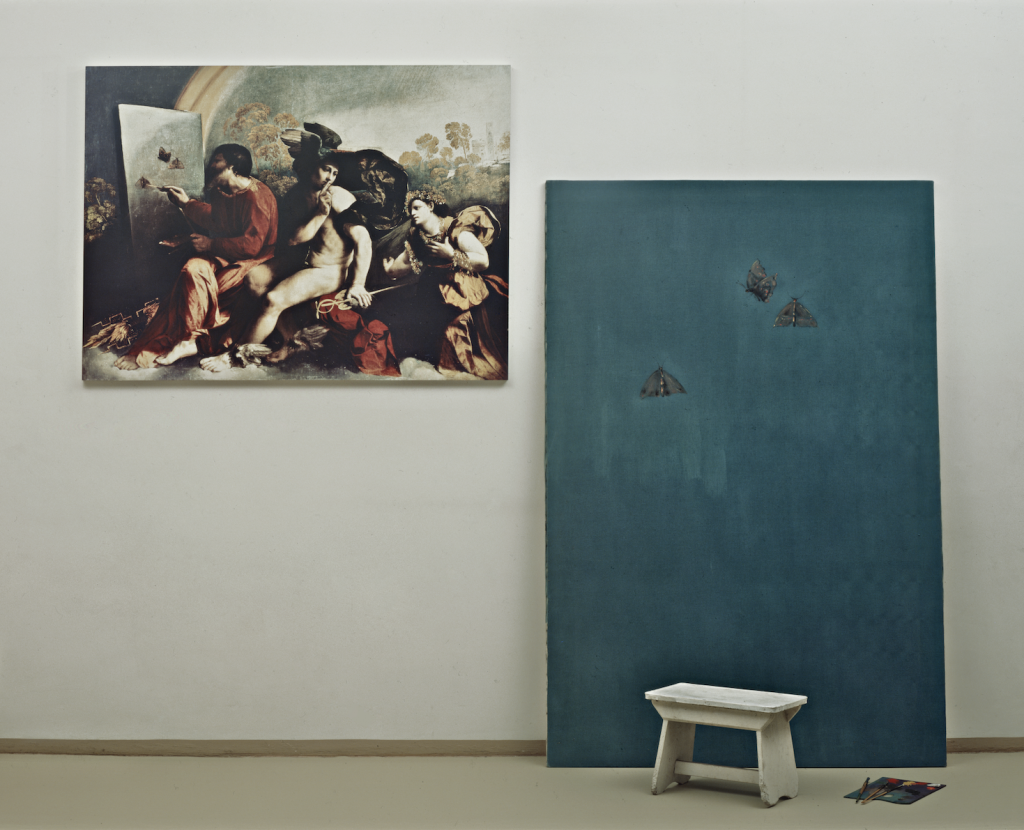
Benjamin Degen and Luisa Rabbia evoke traditional sophisticated, meticulous techniques and archetypes of art and art history in their creations. As well as a 2020 work on canvas and the preparatory drawing that accompanies it, Degen also recreates his studio in the exhibition, which the pandemic reduced to a single desk in his house in Beacon, New York. Rabbia’s most recent painting work, also developed in her NY studio, is presented along with a small ceramic piece produced at her base in Turin, as well as photographs and videos relating to the two spaces.
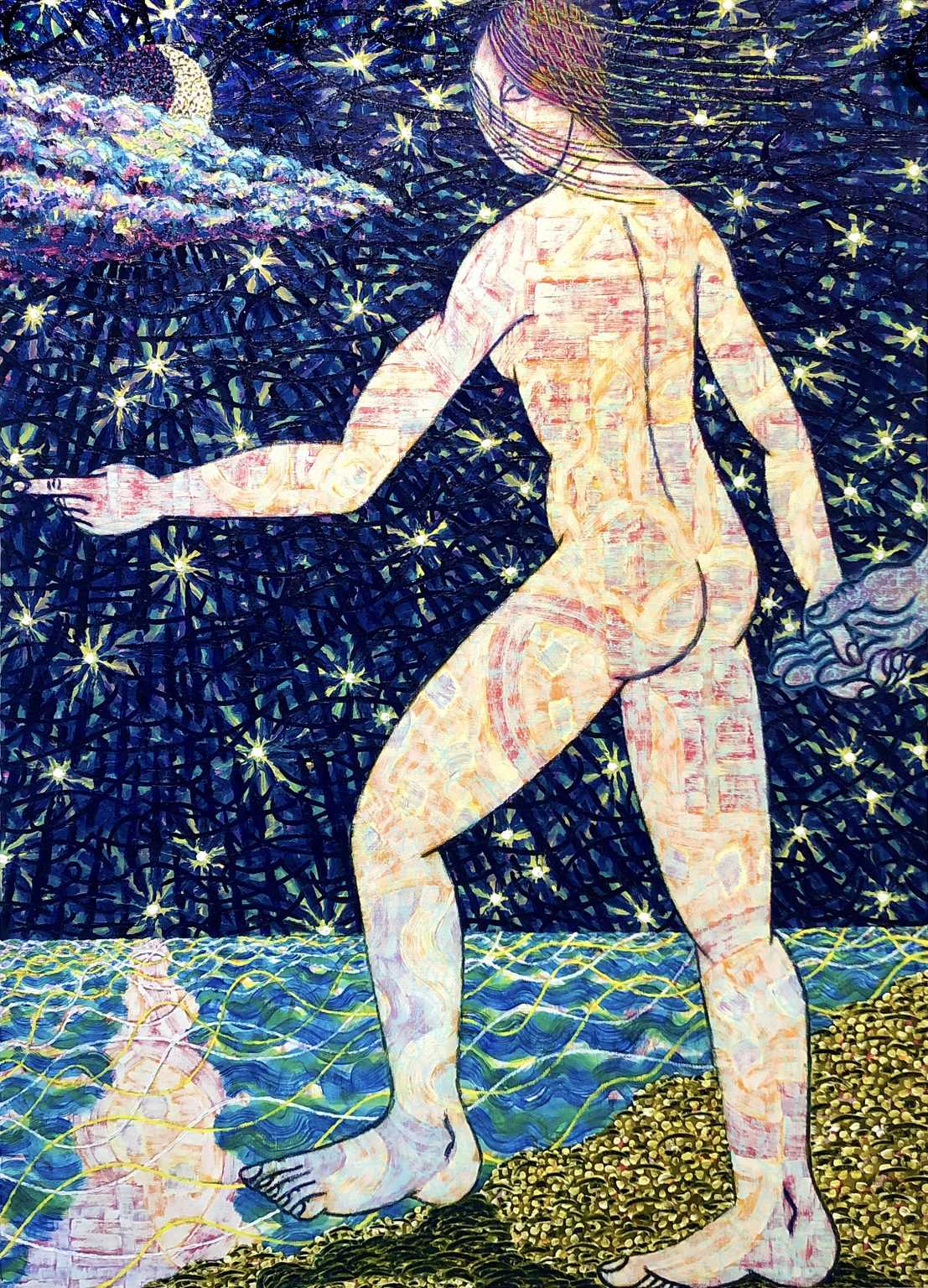 Benjamin Degen, Way, 2020, Oil and enamel spray on canvas on panel, 213.4 x 152.4 cm. Courtesy Collezione Maramotti, Reggio Emilia. © Benjamin Degen.
Benjamin Degen, Way, 2020, Oil and enamel spray on canvas on panel, 213.4 x 152.4 cm. Courtesy Collezione Maramotti, Reggio Emilia. © Benjamin Degen.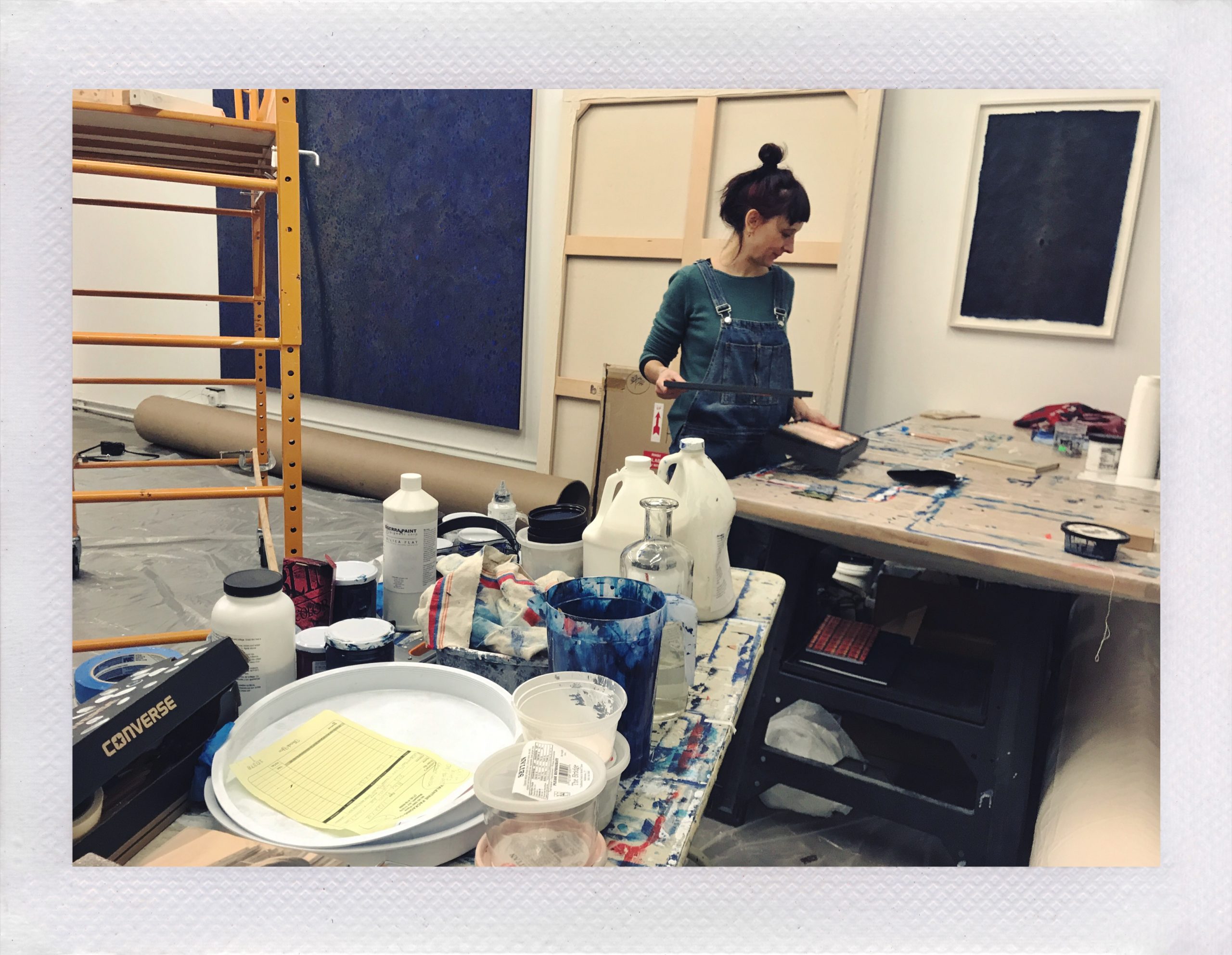
Enoc Perez and Daniel Rich both share an interest in iconic architecture and its symbolic values, and the two artists’ painting techniques both incorporate photography and printing processes. Perez – whose works dedicated to Casa Malaparte are on permanent display on the second floor of the museum – presents his process drawings and two oil-on-canvas works dedicated to the TWA Flight Centre at John F. Kennedy airport, with videos showcasing certain aspects of his large studio in New York. Photographs, diagrams, colour palettes and Rich’s personal thoughts on his practice at his studio in Berlin accompany a painting depicting the Torre Velasca in Milan, as well as a preparatory draft complete with sketches and notes from the artist.
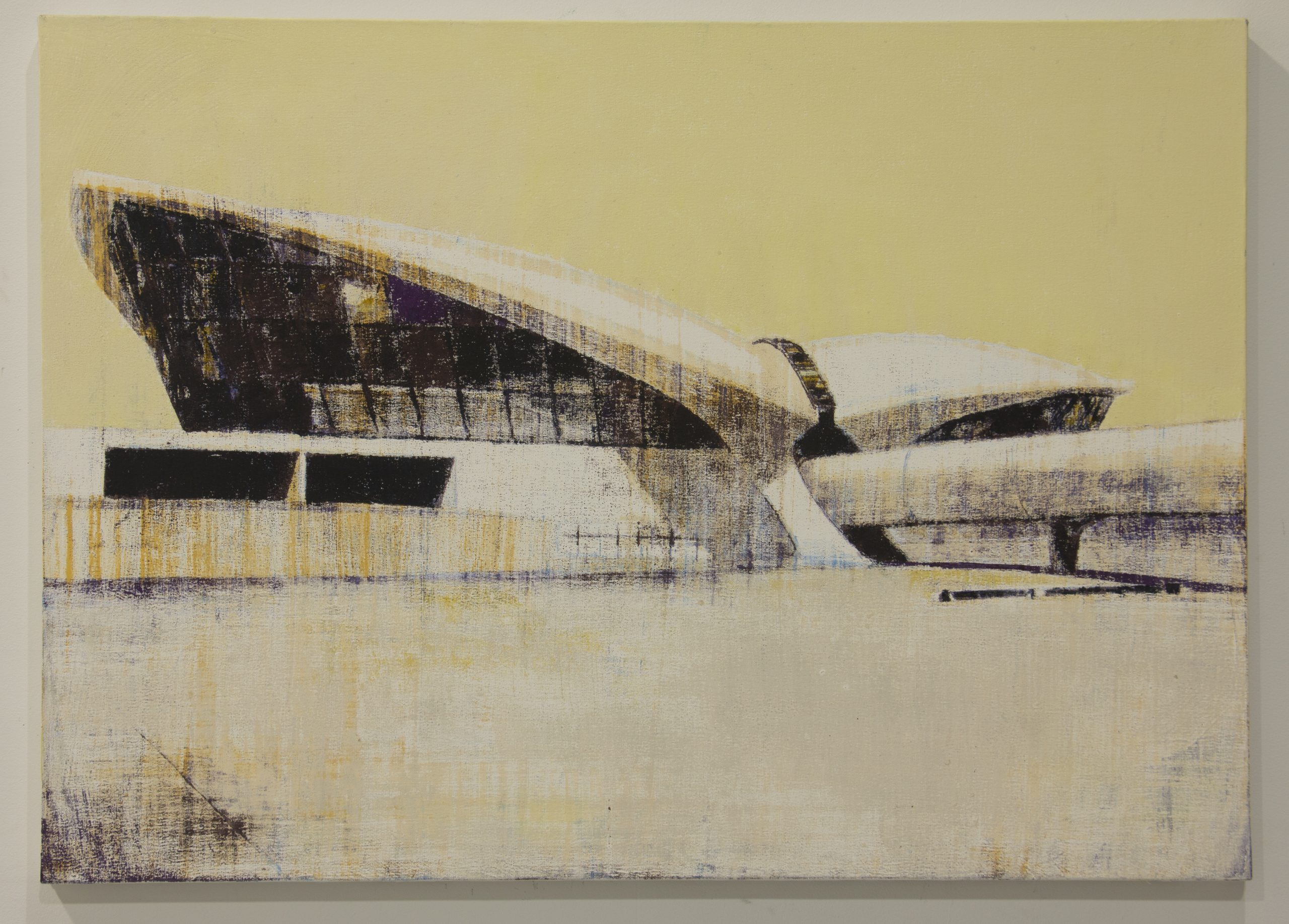 Enoc Perez, TWA Terminal, Kennedy Airport, 2006, Oil on canvas, 76.2 x 106.7 cm. Courtesy and © Enoc Perez.
Enoc Perez, TWA Terminal, Kennedy Airport, 2006, Oil on canvas, 76.2 x 106.7 cm. Courtesy and © Enoc Perez.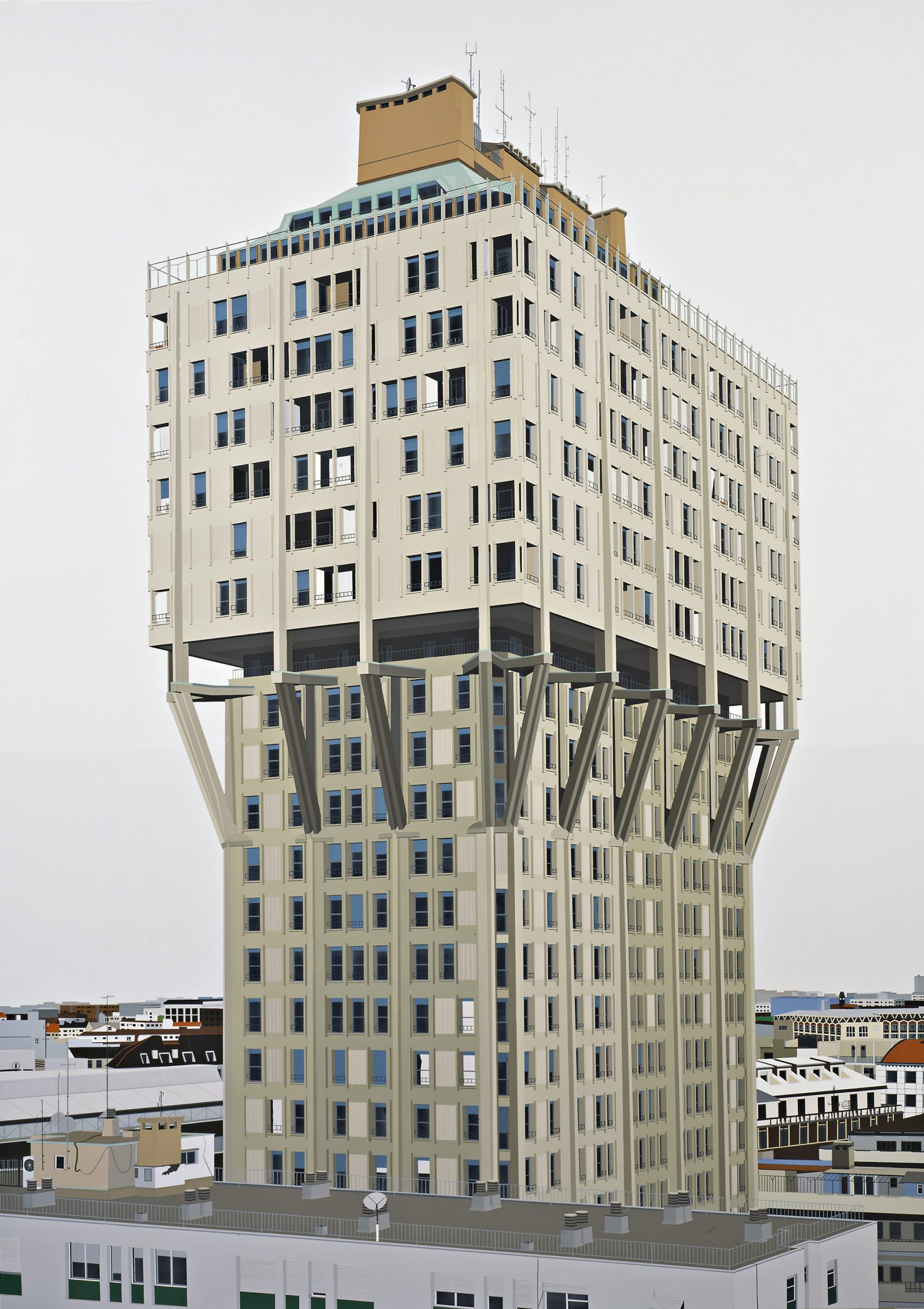
The New York studios of Barry X Ball and Tom Sachs are complex, structured systems, large workshops/forges in which the artists’ work is developed with extreme precision with assistance from numerous partners. Videos, photographs and a sculpture new to Collezione Maramotti document the innovative technological processes and the traditional manual steps X Ball uses to update forms and precious materials deriving from the world of classical sculpture. Sachs, meanwhile, recreates a screening room for Ten Bullets, a video explaining the rules and practices assistants and visitors to his studio are expected to follow. Various objects and fanzines are displayed at the entrance to the room, while two parts of his installation The Choice (2001-2002) are displayed on the second floor of the museum.
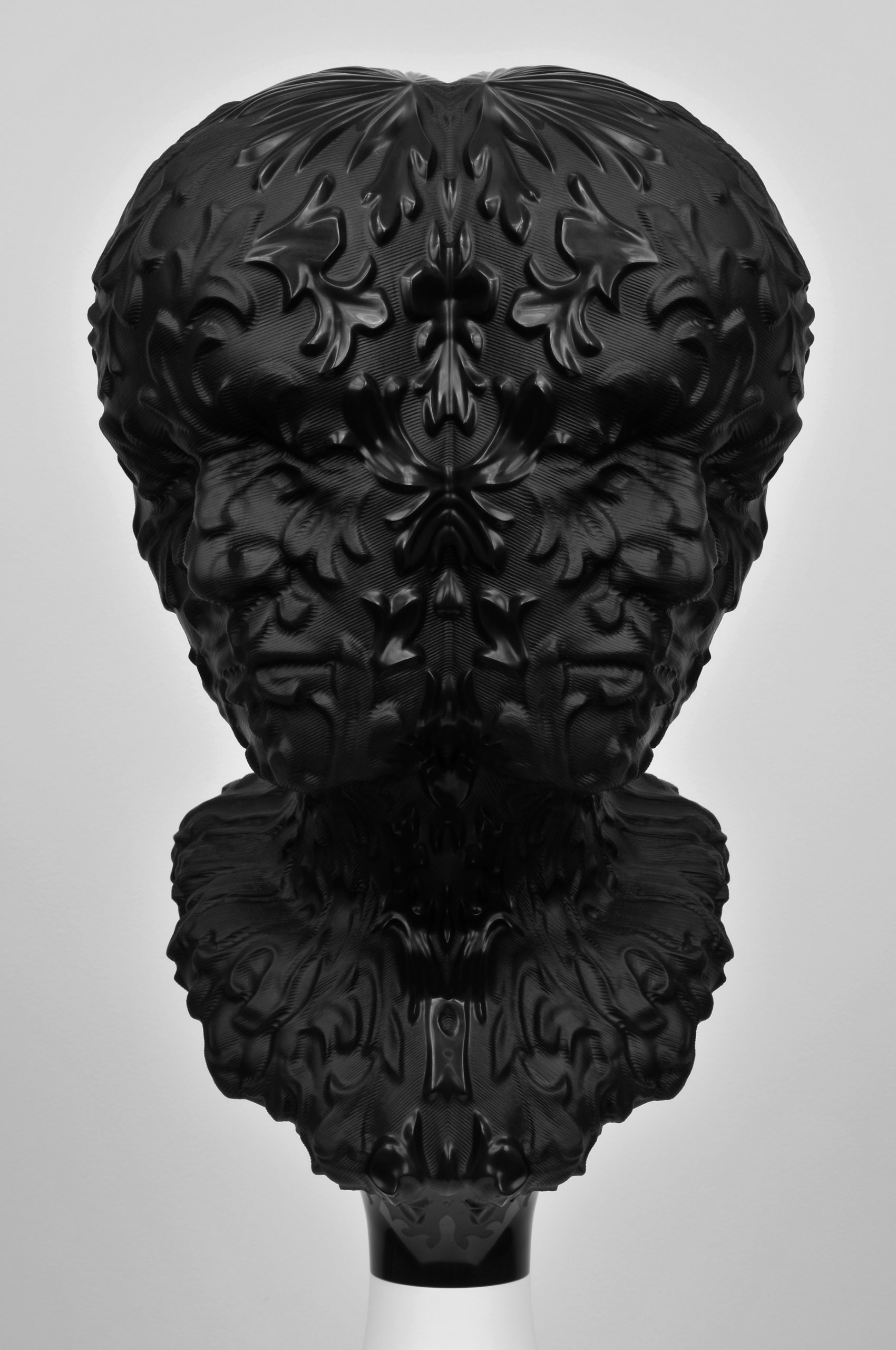
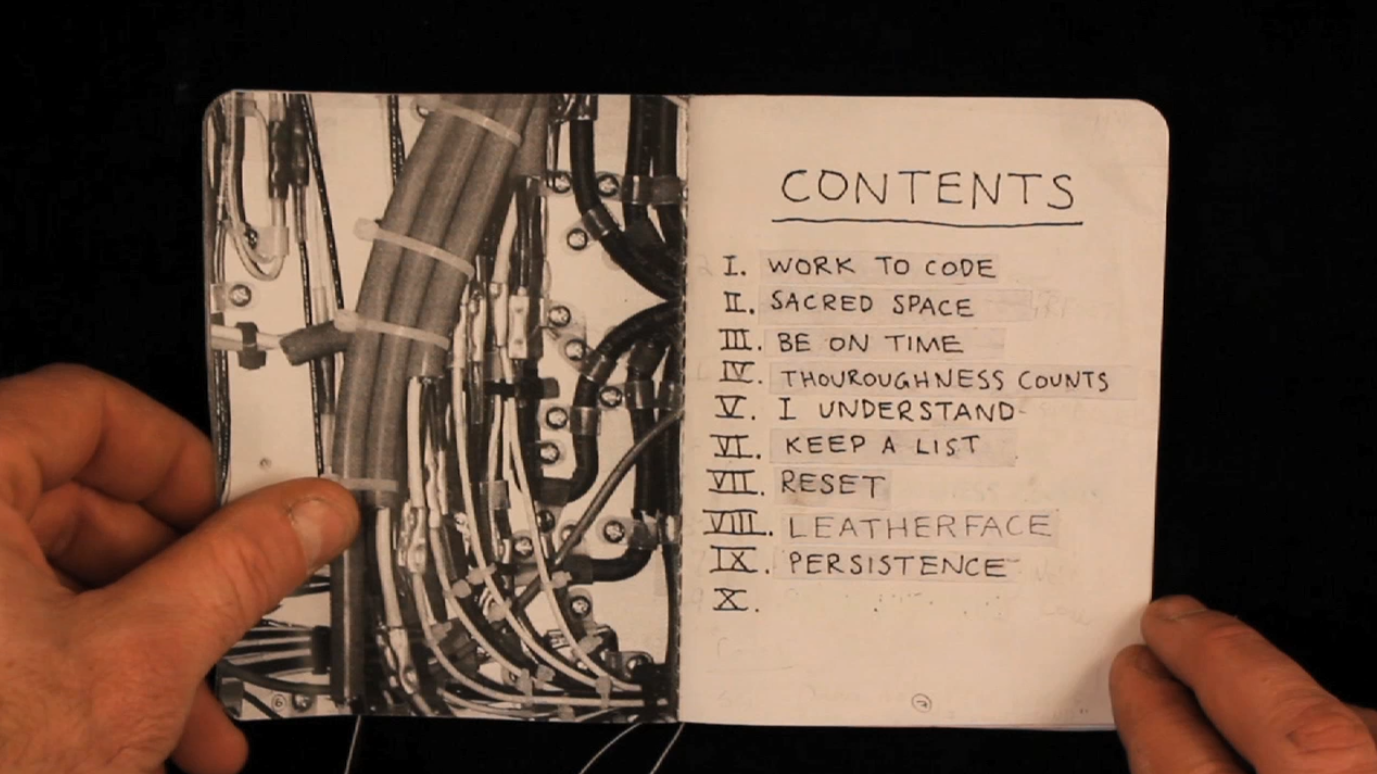
Mark Manders’ studio is at the heart of his practice: his works sometimes remain there for years during their gestation period, being assembled and reassembled in different configurations. The large IRoom (Installation Room) and the series of drawings on display, on loan from Belgium, together with Manders’ two works in the permanent collection, offer insight into the artist’s attempt to build a (potentially eternal) image of himself using figures and inanimate objects that inhabit both rooms and metaphysical spaces – places of the mind. Transformation is also an essential feature of the sculptures produced by TARWUK, hybrid creatures that incorporate the various conceptual and material layers from which they are formed. The sculpture, photographs and drawings on display combine a depiction of the artists’ nomadic journey through various New York studios with the elements that appear in their works, which can be viewed at the same time in the solo exhibition dedicated to the duo in Collezione Maramotti’s Pattern Room.
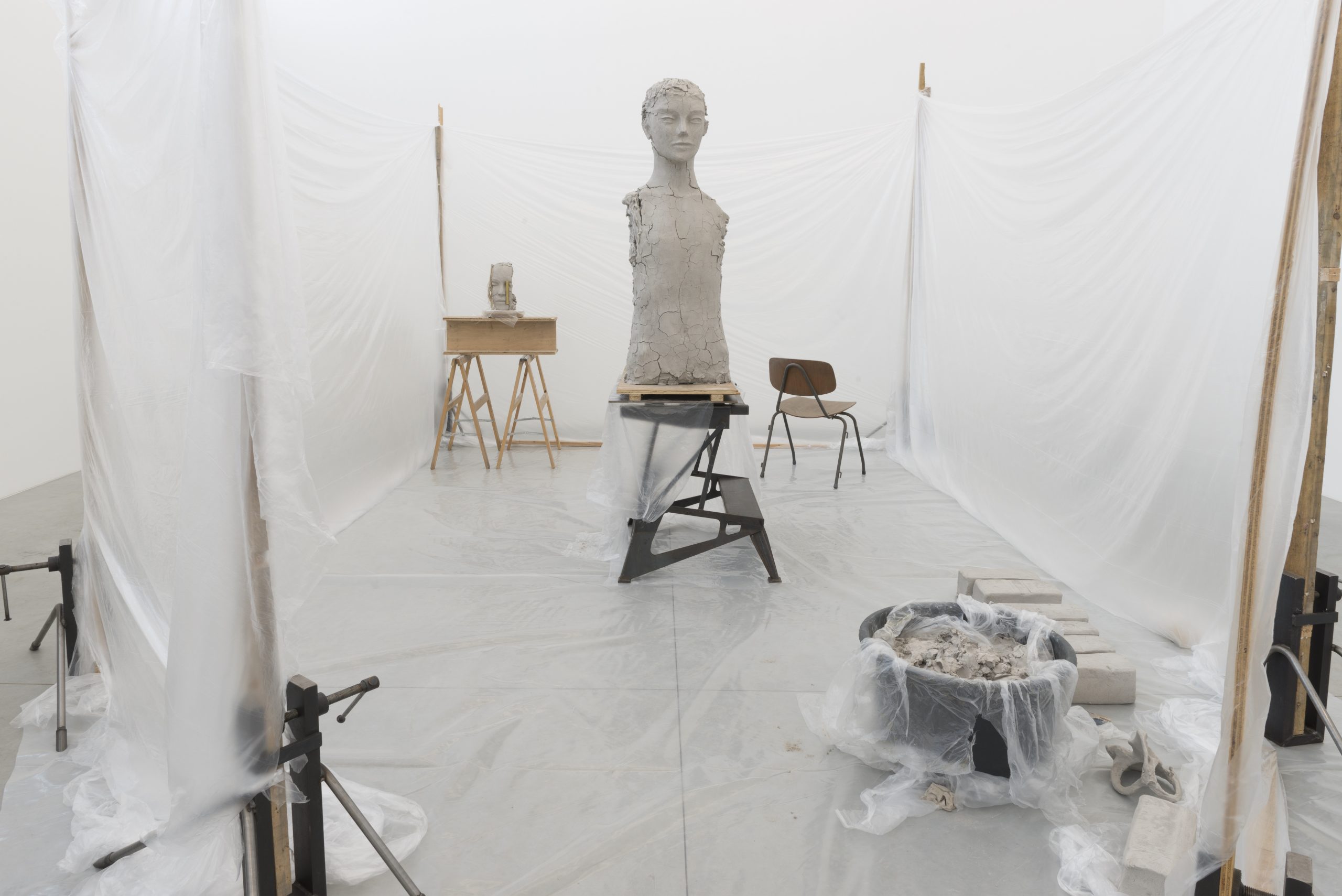 Mark Manders, Room with Unfired Clay Figure, 2014, Painted bronze, wood, iron, platic, painted ceramic, chair and painted epoxy (unique installation), 273 x 440 x 620 cm. Courtesy Zeno X Gallery, Antwerp. © Mark Manders. Photo: Peter Cox.
Mark Manders, Room with Unfired Clay Figure, 2014, Painted bronze, wood, iron, platic, painted ceramic, chair and painted epoxy (unique installation), 273 x 440 x 620 cm. Courtesy Zeno X Gallery, Antwerp. © Mark Manders. Photo: Peter Cox.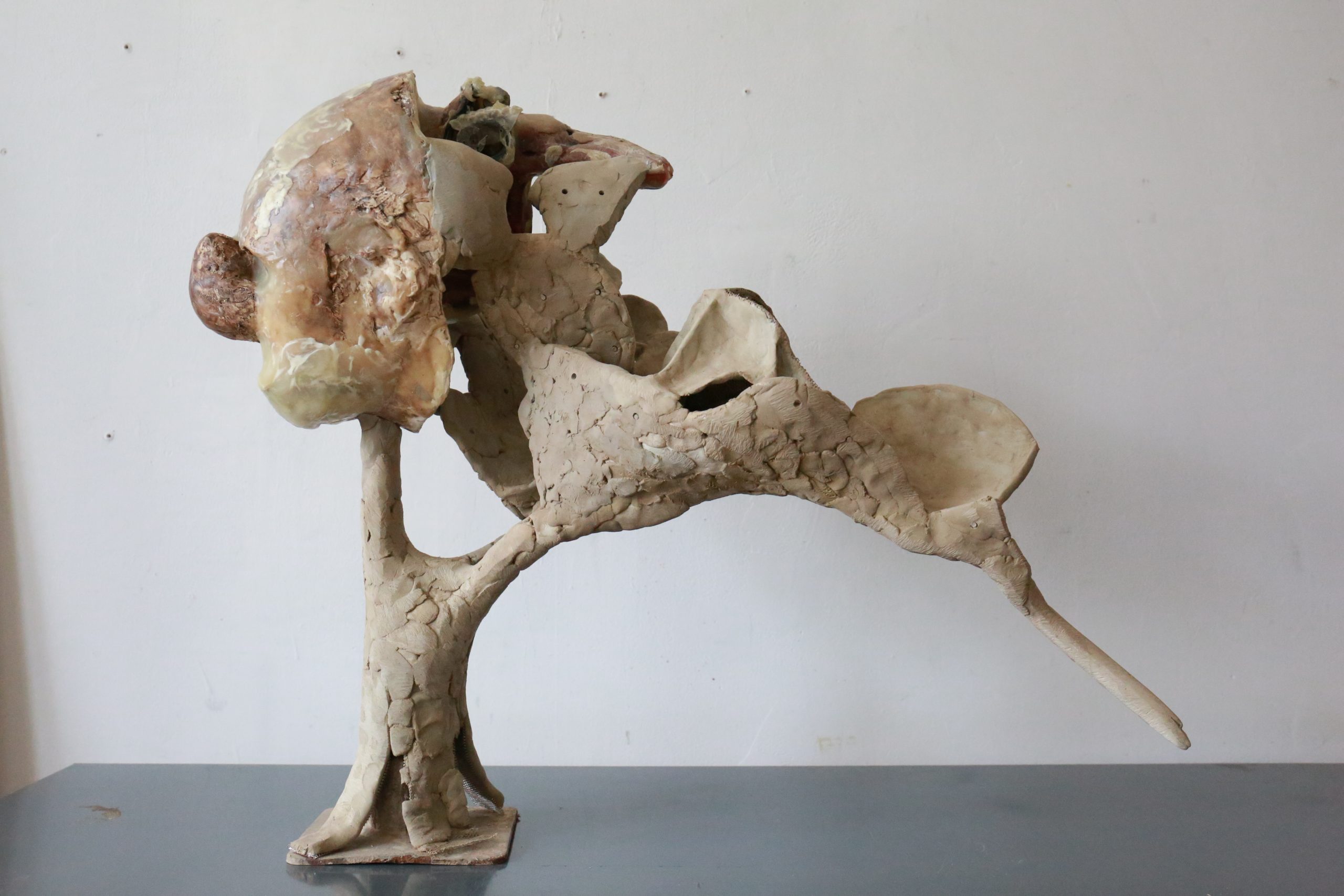
Matthew Day Jackson and Andy Cross combine painting, sculpture and installation to provide critical evidence on topics relating to history, culture, society and American politics. Two of Jackson’s works from 2007 are paired here with various photos taken at the artist’s first studio during their creation, along with a series of photographs of all the spaces that Jackson has considered studios since then. Cross, meanwhile, in 2021 painted on the back of a large work from 2005-2006 that was already part of the collection but never previously exhibited, creating a bridge between his past practice and present exploration. The painting expands, invading both sides of the canvas.
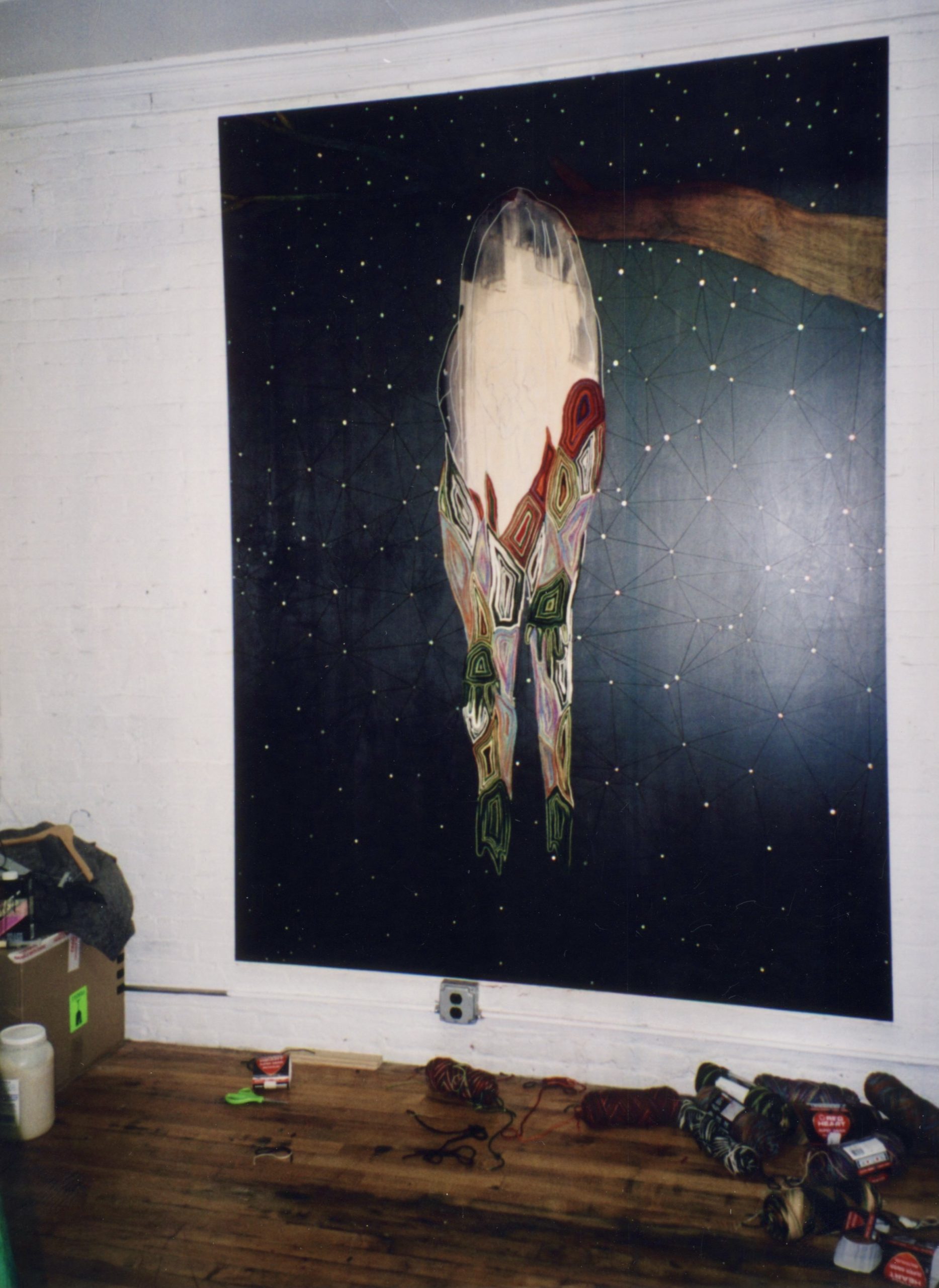 Matthew Day Jackson, Disburdened Flesh, 2007, Stained wood, acrylic, mother of pearl, abalone, yarn, nail, 244 x 183 cm. Courtesy Collezione Maramotti, Reggio Emilia. © Matthew Day Jackson.
Matthew Day Jackson, Disburdened Flesh, 2007, Stained wood, acrylic, mother of pearl, abalone, yarn, nail, 244 x 183 cm. Courtesy Collezione Maramotti, Reggio Emilia. © Matthew Day Jackson.